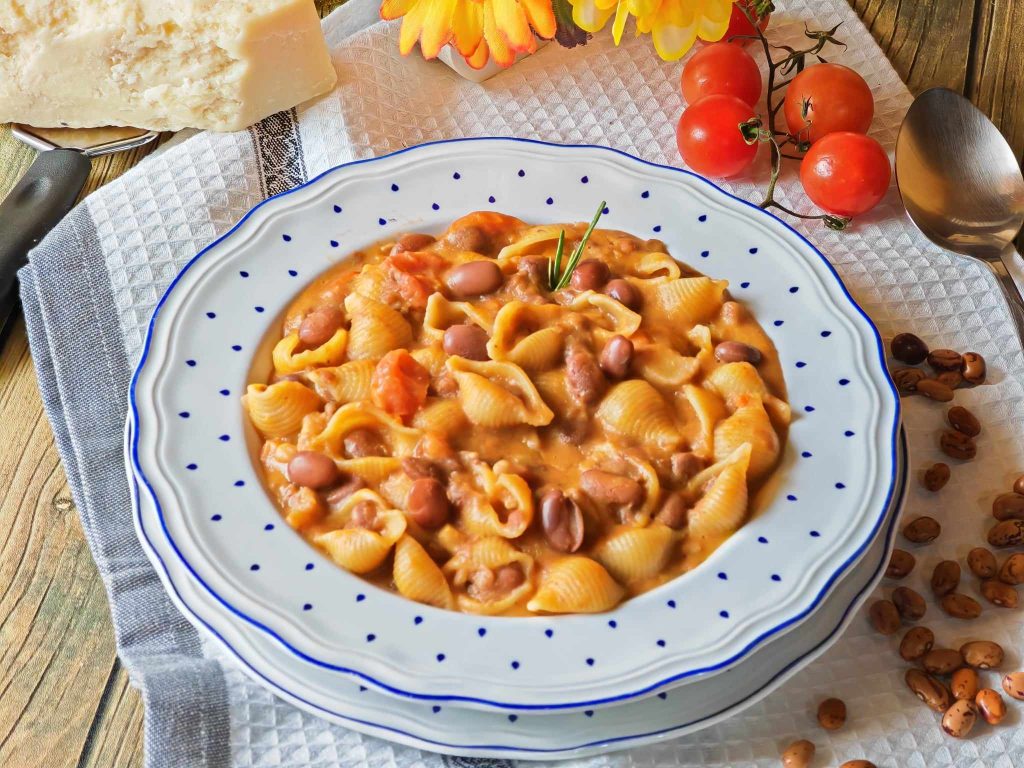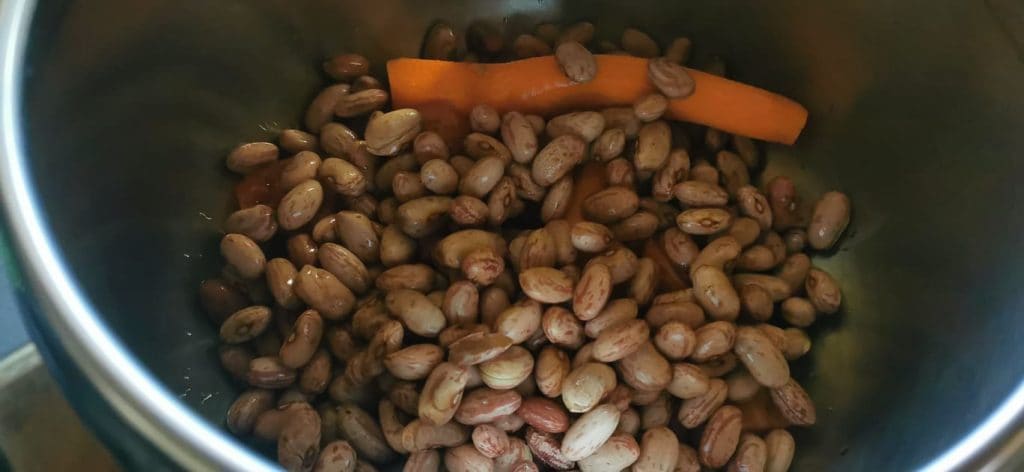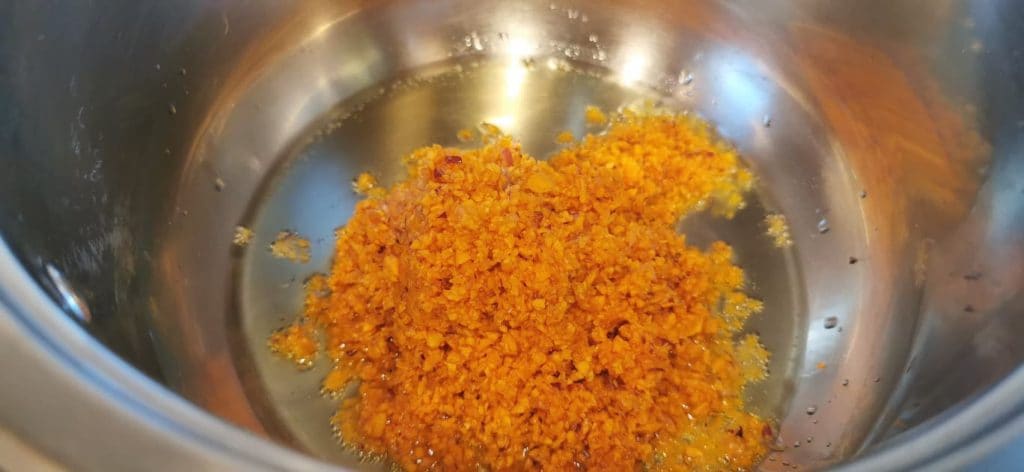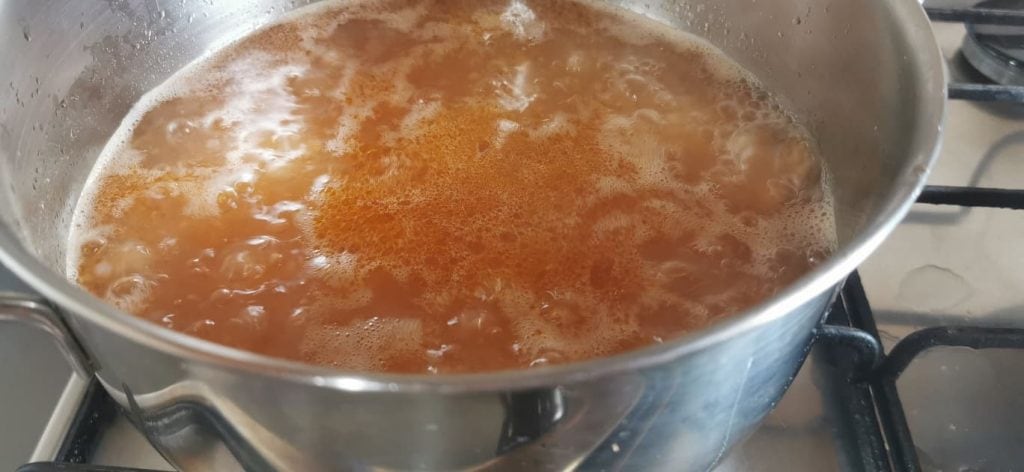Neapolitan pasta and beans. A traditional dish, humble but full of flavor, a country dish with great taste. With a delicate aroma and simple, genuine ingredients.
Don’t know what to cook? Here’s the simplest dish there is, easy, quick, tasty, and everyone in my house loves it. Plus, it’s economical and a healthy dish.
The pasta and beans recipe is one of the simplest I know, a real breeze, making it the perfect dish for those with little cooking experience but who do not want to compromise on taste!
I used dried beans, of course soaked the night before in water with a pinch of baking soda. When it’s time to boil them, drain them and transfer them to a pot with plenty of water and a few bay leaves and boil the beans for about 1 hour; if you use a pressure cooker, the times are halved.
Once boiled and ready, you can use them for the recipe found below.
But if you’re short on time, use canned beans to serve up a rustic and economical dish.
Choose the type of beans you prefer. For this pasta with beans, you can use either borlotti, with a stronger flavor, or cannellini, more delicate. In any case, you will get a delicious and rich first course, genuine and healthy.
Some result in a white dish, in which no acidity is perceived and sweetness prevails; others, however, prefer the strong and sour taste of tomato.
There are also liquid ‘brothy’ preparations and others decidedly dense ‘a characteristic obtained by simmering the beans for a long time and cooking the pasta within them.’ Choosing the pasta is also very important; short or long, dried or fresh
Pasta and beans is a more well-known first course in the world. With a bit of red from the tomato, it’s my favorite.
In the Neapolitan version, the peculiarity is that the pasta is cooked together with the legumes, making the dish creamier, thanks to the starch released by the pasta during cooking.
Tradition dictates the use of mixed pasta, but feel free to use the pasta you like best.
The secret to a successful dish is respecting cooking times and a drizzle of raw oil with a grind of fresh pepper.
Let’s make this great classic of Italian cuisine together!

- Difficulty: Very easy
- Cost: Very economical
- Preparation time: 25 Minutes
- Portions: 4
- Cooking methods: Stovetop
- Cuisine: Italian
- Seasonality: All seasons
- Energy 338.06 (Kcal)
- Carbohydrates 49.35 (g) of which sugars 7.13 (g)
- Proteins 13.52 (g)
- Fat 8.80 (g) of which saturated 1.16 (g)of which unsaturated 0.40 (g)
- Fibers 9.51 (g)
- Sodium 685.40 (mg)
Indicative values for a portion of 200 g processed in an automated way starting from the nutritional information available on the CREA* and FoodData Central** databases. It is not food and / or nutritional advice.
* CREATES Food and Nutrition Research Center: https://www.crea.gov.it/alimenti-e-nutrizione https://www.alimentinutrizione.it ** U.S. Department of Agriculture, Agricultural Research Service. FoodData Central, 2019. https://fdc.nal.usda.gov
Ingredients for Pasta and Beans
- 11 oz pasta (mixed or your preference)
- 1 cup dried borlotti beans (or cannellini or one can already cooked (16 oz))
- 1.5 cups cherry tomatoes (or canned peeled tomatoes)
- onion
- 1 stalk celery
- carrot (1)
- to taste extra virgin olive oil
- to taste salt
- pepper
Tools
- Pressure Cooker
- Pot
Steps for Pasta and Beans
First, soak the beans at least 12 hours before proceeding with the preparation. Once the beans are softened, drain them and boil them in abundant water with a carrot.
(Of course, if you’re short on time, you can use canned beans drained of their water; in this case, you will need two cans).
(To shorten the time, it’s perfectly fine to cook the beans in the pressure cooker).
(Be careful not to use steel ladles as it makes them hard)
(I repeat, this step can be avoided if you use canned pre-cooked beans).

Take a pot and sauté half a chopped onion, a stalk of celery, and half a carrot with a drizzle of olive oil.
Add the finely chopped cherry tomatoes.

Cook the sauce over low heat for about 5 minutes, then season with salt and flavor with pepper.
Take a ladle of previously boiled beans, pass them through a food mill, and add them to the pan with the sauce and a ladle of their cooking water, cook over low heat for about 10 minutes.
Add the whole beans to the sauce with a bit of their cooking water.

At this point, pour the pasta into the pot and stir with a spoon, cooking for the time indicated on the package, keeping it quite al dente.
When the pasta is cooked, turn off the heat and let it rest for a few minutes.
Serve hot on plates.

Enjoy your meal.

Notes and Tips
Neapolitan pasta and beans is a traditional Neapolitan dish, economical and very nutritious, perfect for a good and warm family dinner.
Beans are a great food as they are rich in protein, iron, and fiber, combined with pasta they become a unique dish.
Pasta and beans can be stored in the refrigerator for a day in an airtight container. The bean sauce without the pasta can be stored for 2-3 days, always in the fridge.
Finish your pasta and beans with a drizzle of raw oil and a pinch of chili pepper, it will be even better and more genuine!
If you prefer, you can replace borlotti beans with cannellini for a more delicate taste, or get creative with pasta shapes, for example, mixing leftovers from packages left in the pantry!
Fresh borlotti cook in 30-45 minutes, while frozen ones generally take a very short time (about 20 minutes).
If you liked these recipes, click on many stars, thank you very much.
See you in my group: https://www.facebook.com/groups/488624465780860
or on my page: https://www.facebook.com/gustoamoreefantasie
Return to Home page
FAQ
Which beans are preferable to use?
To make this Neapolitan pasta and beans dish, it would be perfect to use fresh beans found in the summer period, but it is also fine to use white dried canned beans or borlotti.
Can I use pre-cooked canned beans?
Sure, if you don’t have time or can’t soak them, you can use canned ones which are very convenient, choosing I recommend preferring steam-cooked ones.
Can I use frozen beans?
No need to soak and frozen beans do not need to be thawed before use.

